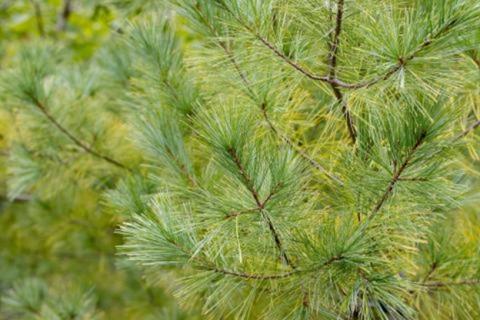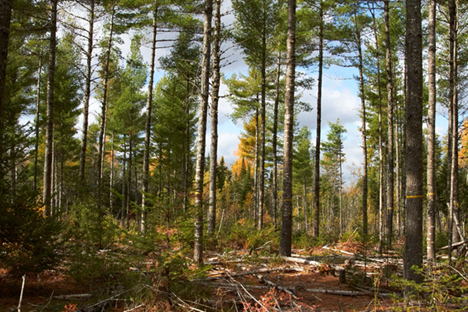White Pine

As always, if we pay attention, our trees tell us stories. Going through the spring season and into early summer, one of the most common questions was about our eastern white pine trees. Specifically, ‘what is causing the brown needles, and will that kill my trees?’ So, let’s talk about our white pine trees a bit.
Eastern white pine is one of our most widespread and economically important trees here in New Hampshire, and most of New England. It composes more than 500,000 acres of New Hampshire’s forests, and of the estimated 30 billion board feet of saw timber, 31% is white pine.

White pine also has many important ecological roles in our forests, including providing food and habitat for many wildlife species. Its seeds are eaten by various birds and small mammals, and the foliage is browsed by some rabbits and deer. Our white pine forests support diverse wildlife communities, including breeding birds, bald eagles, and many cavity-nesting wildlife.
This disease, white pine needle damage, is a complex of foliar diseases that is being accelerated by the warmer, wetter springs that we have seen across the region. These regional changes in our climate are increasing both the spread and severity of the disease. There has been research done at UNH indicating this disease is slowing the growth and hampering the health of white pine region wide.
Infected trees experience a yellowing of mature needles in early spring, followed by a large defoliation event beginning in mid-June. Research has shown that 47% of the total annual litterfall is now occurring during June and July, which is much earlier than the time of natural needle cast in October. The needles that are lost are primarily the previous year’s needles.

As a result of this needle damage, much of the mature foliage is lost during the most productive part of the growing season. The loss of this foliage also reduces the amount of carbon that is assimilated within healthy stands. New needles take approximately four months to fully develop which reduces the rate of photosynthesis. Research has also shown that infected trees are unable to resorb nitrogen from the needles cast during the summer. This is important because nitrogen is an essential element that helps facilitate photosynthesis. High disease levels in consecutive years creates chronic stress, which reduces growth and exposes these trees to other insect and disease threats.

On-the-ground research and practices have shown that reducing stem densities within infected stands can increase tree vigor in the second year following the treatments, and disease severity is reduced.
There are options for managing your forests, whether they are in the early stages of growth or a mature stand of trees. Contact your consulting forester, or your UNH Cooperative Extension County Forester, for management options and practices.
Sources:
‘UNH Research Finds White Pine Needle Damage Hampers Health of Region’s Trees’; April 2, 2018
Field Manual for Managing Eastern White Pine Health in New England’; Univ. Of Maine, June, 2019
Have a question about your woods? Contact your Extension County Forester today!
Do you love learning about stuff like this? Subscribe to the NH Woods & Wildlife Newsletter.
A quarterly newsletter providing private woodlot owners in New Hampshire with woodlot management news, pest updates, resources, and more.
